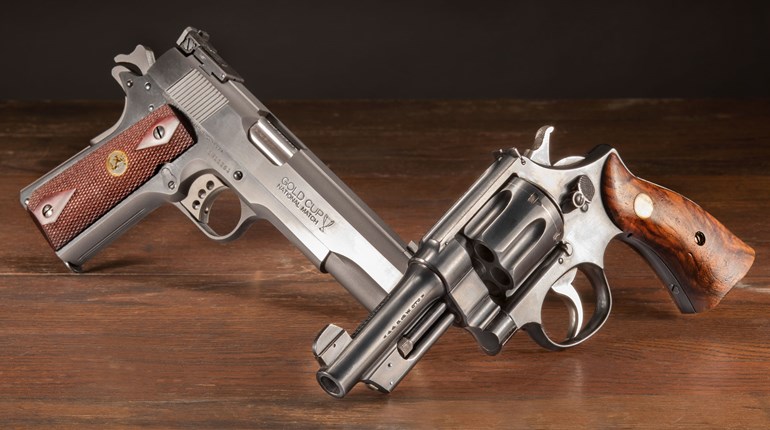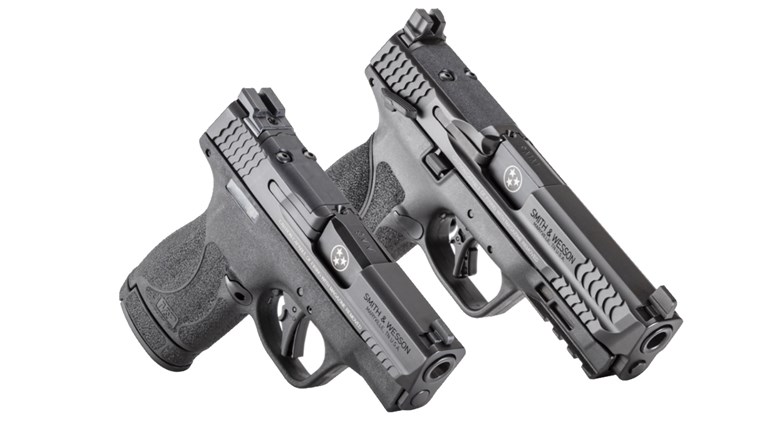
A certain cohort of shooters replied with, shall we say, zeal to our suggestion last week that pistol caliber carbines may have a place in home defense. Rightly, they posited the trusty revolver as a still-superb alternative, with the additional advantage of being carry-capable.
We don’t disagree. Or at least, not exactly. And don’t start with us about being semi-auto obsessed. We readily concede we’re big fans of the type, but have multiple proofs of revolver fealty, too: Here, obviously, but also the fact that we own and shoot them in several calibers, and even compete with them in current venues. There’s also that we-hate-to-think-what-we’d-give impulse for a new Colt Diamondback that we could shoot (and shoot, and shoot, and shoot) without guilt.
But as splendid as the modern, or even vintage, revolver can be, you should undertake defensive shooting of any stripe with a full understanding of their limitations.
Recoil
Recoil measurement is a difficult thing in terms that are truly useful. It isn’t that there are no mechanisms or metrics, but rather that they don’t seem to apply very well to shooters “across the board.” Some—generally those of quite apparent power, physical stature, athleticism, etc.—are essentially recoil agnostic: They (luckily) sense only degree. Measurement corresponds very well to how they report the feel of recoil between action types and across calibers. Many others are not this way; they are more inclined to report “sharp” recoil as “heavy,” and “slow” recoil as “light.” Unsurprisingly, there’s huge variation in between.
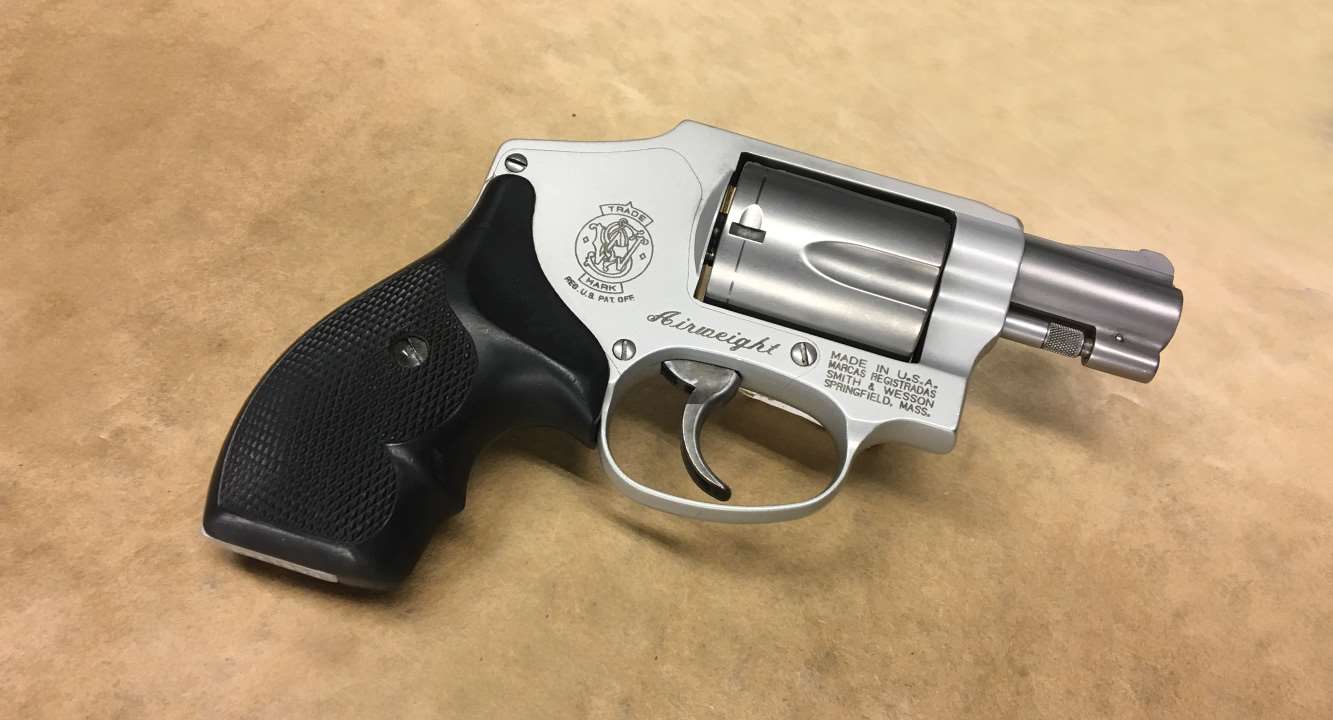
Neither is wrong, but it does makes our commentary more difficult. Put it this way: Most would say that, per unit of downrange, fight-stopping power, revolvers are more punishing to shoot. Because virtually none of them have mechanisms that spread recoil impulse in time or turn energy into work (through springs and moving mass that cycle the action to load new cartridges, for instance), it’s just you and St. Isaac (Newton). Your firearm, hands, arms and other body mass must absorb the equivalent of the projectile energy as recoil according to the Third Law of Motion.
Within the limits of what most people find comfortable enough to practice with, .38 Special is about the pinnacle. Certainly, there are other and more capable fight-stoppers, but practicing to the extent we’d encourage just about never happens with these harder hitters. Cost too, becomes a substantial factor. Especially in carry-scaled revolvers, 50 rounds of .38 SPL are plenty, and grows increasingly impractical as you age: The small bones of the wrist seem to particularly rebel against the comparatively sharp recoil of revolver shooting. Larger, heavier revolvers can moderate the discomfort of more powerful calibers to an astonishing degree, but carry practicality goes downhill in direct proportion.
When it comes to that unhoped-for engagement, the difficulty compounds. While a revolver can actually fire faster than an autoloader, (though actually effecting this is a rare capacity and the result of massive practice), controlling recoil at this pace in combination with appropriate accuracy is a challenging proposition. That accuracy will be crucial in a defensive circumstance because …
Capacity
Revolver capacity in terms of shots without reloading is very modest, at least by modern standards. The Smith & Wesson 929 we referred to above has eight, and of course 9 mm is a very capable defensive caliber, but it is no sort of practical “carry” arm. There are 10-shotters out there, but they’re .22 caliber; unless you’re willing to practice even more, they just aren’t up to defensive work. (Their low power puts a vast premium on pinpoint accuracy if they are to be effective fight stoppers.)
Furthermore, a carry-worthy revolver grows thick in a hurry. From the discreet carry standpoint, even a five-shot revolver is 10 percent thicker than a 15+1 shot semi-auto. Upside is that it is considerably lighter—though that, in turn, gets us back to majorly thumpy recoil.
Then, there’s recharge speed. A comparatively slow semi-auto reload is three seconds, and a fast one half that, while a comparatively fast revolver reload is about four seconds. This assumes a speedloader of some type. Threading individual cartridges? Forget it.
So however much you love that revolver, be honest with yourself: You’re working with fewer, and generally less capable, rounds that are harder to shoot with precision and perhaps necessary speed, and meaningfully slower to reload. This puts big pressure on …
Accuracy
Revolvers have long been capable of astonishing accuracy in the proper hands (and more so than most autoloaders until comparatively recently). The factors that contribute to this are numerous, ranging from finely honed skills in individuals to generally high quality in certain marques.
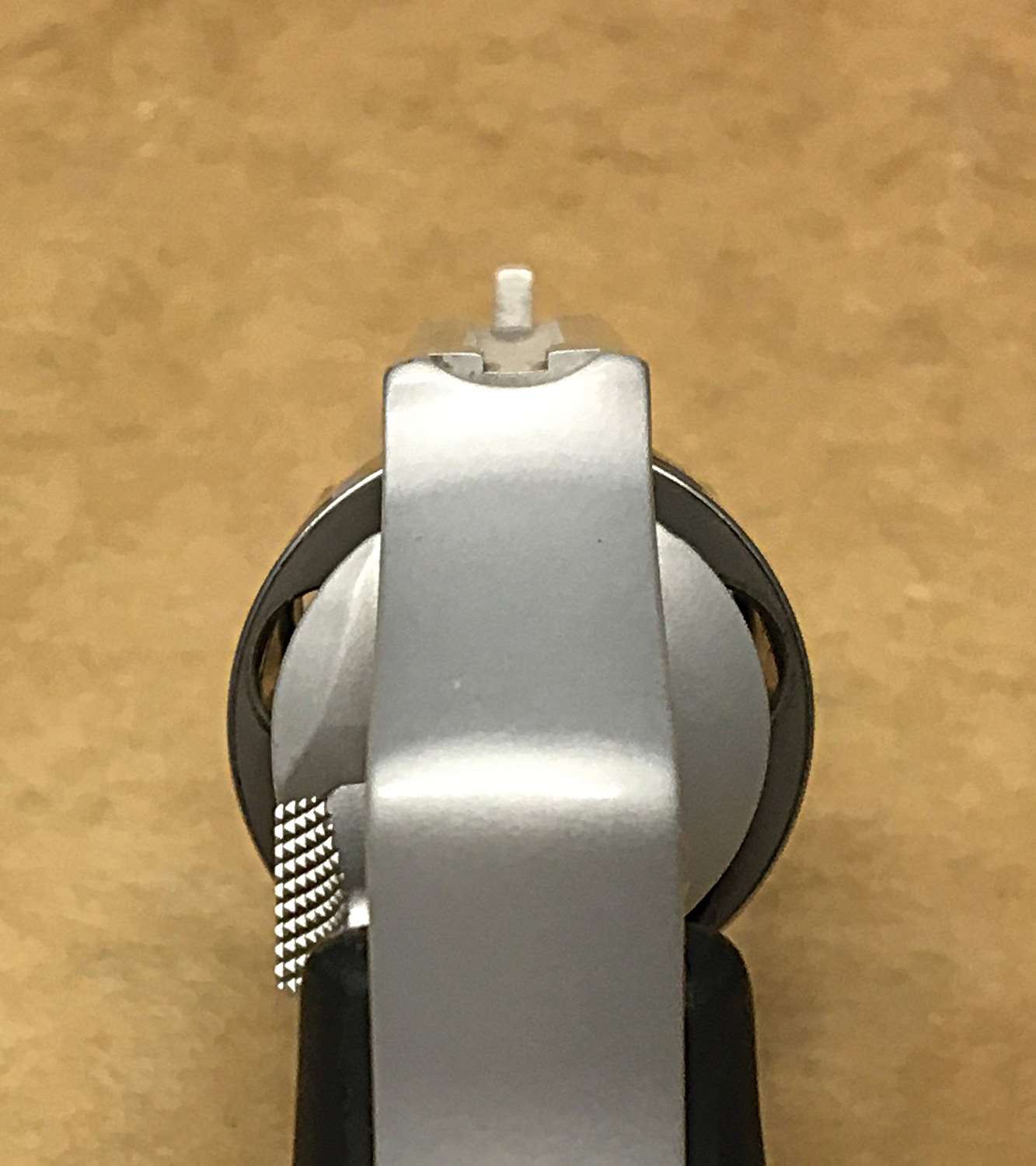
Double action varieties also have an ace-in-the-hole of sorts—single-action fire. The ability to do the heavy lifting—cylinder rotation and hammer-cocking—in a step separate from trigger press can be a huge aid to precise shot placement. There are pockets of technique (especially including the SASS guys and gals on their single actions) that make this look easy, but it comes at the price—again—of extremely dedicated practice.
Carry-type revolvers may add not one but three complexities to the accuracy that defensive or protective shooting demands. Short sight radius—the distance between the front and rear sights—makes sight alignment more crucial to precision because small errors compound rapidly. Moreover, some of these sights are of the “receiver” type, with the rear notch milled into the top strap, and therefore not adjustable to how your brain and eyes “construct” sight picture.
At defensive distances, neither of these are insuperable, and it is unfortunately common for shooters of these small revolvers to (absurdly) blame such sights for what is actually improper technique or—you guessed it—insufficient practice. Note, too, that the wide variety of sight types available for semi-autos is defusing much more slowly into the revolver world; be cautious about assuming you can get any sights you want on a revolver.
Last is trigger press. Defensive revolvers will almost always be used in double action mode (indeed, two favorites—S&W’s 442 and 642—only run this way). It’s a somewhat more demanding technique than many expect in relative terms, but also a rewarding one: Few things will teach good trigger manipulation like a DA revolver. Even if your carry and/or home defense firearm is a semi-auto, occasional practice on a good-quality revolver will improve all your shooting.
Safety
Unlike the much-maligned semi-auto, the vast preponderance of revolvers have no on-board safeties. If a modern double-action is ready for defensive application, you pick it up, press the trigger, and “bang.” Single action revolvers will require cocking of the hammer prior to every trigger press and so are, in a way, safer, but we don’t know of anyone who recommends these as appropriate for defense except in the sense that they’re better than no firearm. Don’t misunderstand—they’re powerful enough in many cases and a lot of fun, but reloading under the best of circumstances is agonizingly slow, and a defensive scenario bust.
The upshot is simple: You have to be prepared to be in physical control of a revolver at all times if unauthorized users are present, and otherwise lock ‘em up. You’ll get no appreciable mechanical help in terms of safety. The same is not necessarily true of semi-autos, by the way, and their increasing popularity in the 1970s began a long, steady decline in accidents as they supplanted the revolver in home defensive employ.
Reliability
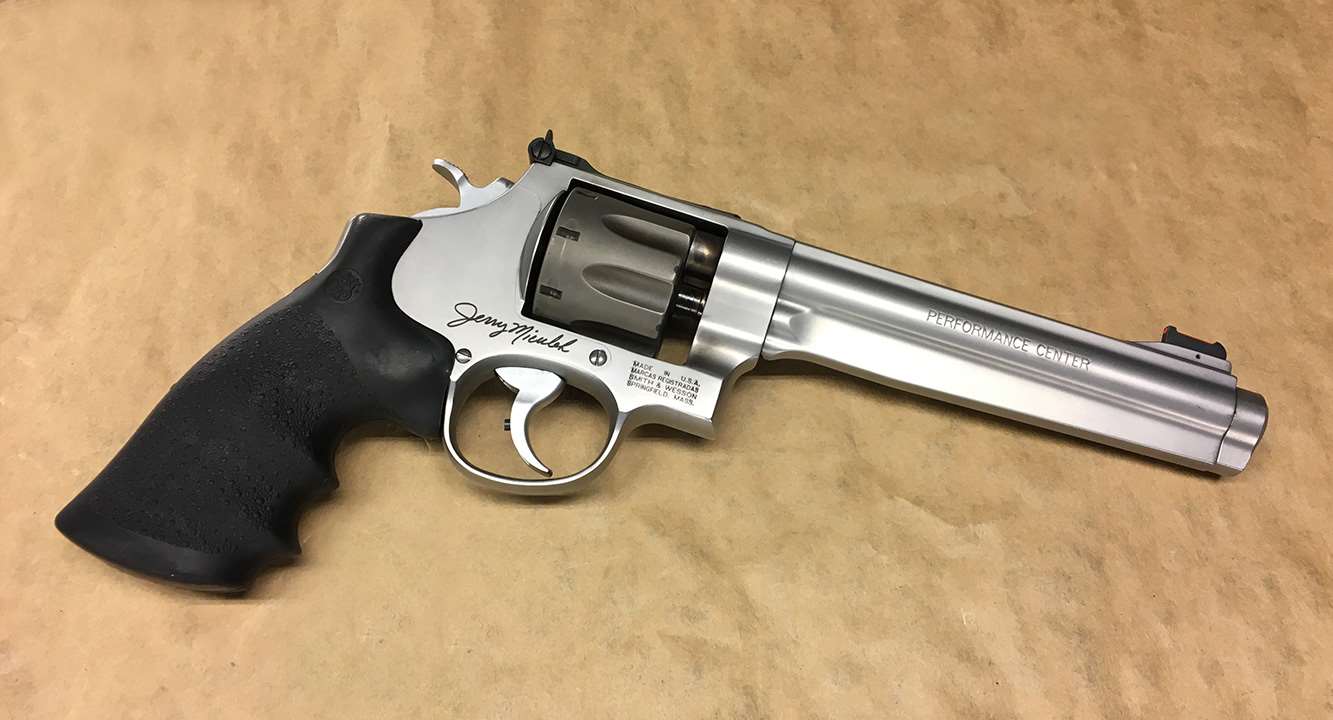
The inherent reliability of the revolver remains the biggest selling point of the type: In the absence of “bang,” press again. Because the feedway isn’t single-threaded, most ammunition problems are fixed just by moving a new round into position with the first of the trigger’s two actions. Within the limits of round count, this is a very good thing for obvious reasons. (There’s one type of ammo problem that is actually more problematic in a revolver though—the squib. This un- or undercharged type of cartridge lodges a bullet in the barrel. If you follow it with another at full power, you’ll likely blow up your gun. Good news here is the dead giveaway “pop,” as opposed to “boom,” that should fairly scream at you “stop shooting!” Never try to shoot a squib out; you’ll need a squib/range rod, gunsmith, or both.)
Mechanical reliability in revolvers is a different matter. Properly cared for, a revolver will indeed run long and well, but it’s unlikely to compete with a modern semi-auto. The internal mechanisms that govern cylinder rotation and barrel alignment are delicate in some senses, and contain small, precisely-tuned parts. They can get out of adjustment, or just plain wear, especially if you practice and train as much as we’d encourage. Cultivate a gunsmith who is a good revolver hand, and learn what to look for to stay ahead of maintenance issues.
Two closing cautions relate particularly to revolver adoption in a carry or home defense role. We often hear or see them as the default recommendation to the less experienced (or completely inexperienced) shooter, and uniformly on the same grounds: “They’re simpler.” This is true in only one sense—external mechanics—and does not, must not, supplant correct, careful instruction. In multiple other respects, and most importantly in the context of safety around unauthorized or untrained users, revolvers may actually add complexity.
Last, recognize that some manipulations will change with aging, and in revolvers, we’re talking specifically about trigger press. Double actions run between eight and 12 pounds here, and this will be beyond the strength of a single digit in some older shooters. It can lead to some alarming and dangerous compensations, to saying nothing of having a disastrous impact on accuracy. If you’re responsible for helping an older shooter, make sure you take this into account in any recommendations and training.
Now shoot those revolvers, and Carry on.
Frank Winn has been studying arms and their relationship to tyranny, meaningful liberty and personal security all his adult life. He has been a firearms safety/shooting instructor for more than 20 years, and earned state, regional and national titles in several competitive disciplines.












